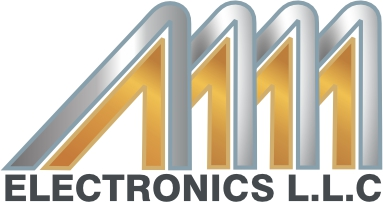Sensors
Sort by
Price filter
Brands
Filter by price
TESTO 16 mm Vane Probe Head Including Temperature Sensor
In stock
Testo 0636 9771 High-precision humidity temperature probe (digital)
In stock
TESTO Humidity temperature probe digital with Bluetooth
In stock
testo 0602 0993 Fast-action, angled surface probe (TC type K)
In stock
Testo Humidity/temperature probe (digital) – wired
In stock
Fluke 80PK-22 SureGrip™ Immersion Temperature Probe
In stock
No subcategories found.
Temperature sensors are crucial components in countless applications across various industries, from manufacturing and automotive to household appliances and environmental monitoring. These sensors provide essential data for controlling processes, ensuring safety, and monitoring the environment.
Types of Temperature Sensors
There are several types of temperature sensors, each with unique characteristics and suited for different applications:
- Thermocouples:
- Thermocouples are among the most commonly used types of temperature sensors. They consist of two different metal wires joined at one end, which produce a voltage when heated that can be translated into temperature measurements. They are known for their wide temperature range and fast response time.
- Resistance Temperature Detectors (RTDs):
- RTDs use metal (commonly platinum) and operate on the principle that the resistance of the metal changes with temperature. They are highly accurate and stable, making them suitable for precision measurements in industrial and scientific applications.
- Thermistors:
- Similar to RTDs, thermistors change resistance with temperature but are made from ceramic or polymer materials. Thermistors are very sensitive and have a rapid response time, although they typically cover a smaller temperature range.
- Infrared Sensors:
- These sensors measure temperature by detecting infrared radiation emitted by objects. They are useful for non-contact temperature measurements, which is advantageous in applications where the object being measured is moving, or is contained within hazardous or inaccessible areas.
- Semiconductor-based Sensors:
- Semiconductor temperature sensors operate on the principle that the forward voltage across a diode junction varies with temperature. These are commonly used in electronic devices due to their compact size and digital output capabilities.
Applications
Temperature sensors are essential in many fields:
- Industrial Control: Used to monitor and control processes in manufacturing, chemical production, and food processing.
- Automotive: Ensure optimal operation of engines and control systems.
- Consumer Electronics: Monitor temperature to protect components and optimize performance in devices like computers and smartphones.
- Healthcare: Used in medical devices such as incubators and diagnostic instruments.
- Environmental Monitoring: Track weather conditions and natural phenomena.
Benefits
The benefits of using temperature sensors include:
- Process Optimization: Enable precise control over manufacturing processes, improving product quality and yield.
- Safety: Help prevent accidents by monitoring systems that can become hazardous if temperatures stray outside safe limits.
- Energy Efficiency: Assist in managing and reducing energy consumption in heating and cooling systems.
- Compliance: Ensure compliance with regulations that require monitoring and reporting of environmental conditions or product temperatures.
Future Trends
The future of temperature sensors is geared towards further miniaturization, enhanced connectivity, and improved accuracy. Developments in materials science and microfabrication technology may lead to even smaller, more efficient, and more environmentally friendly sensors. Integration with IoT systems is increasingly commonplace, enabling more sophisticated monitoring and control systems that can predict failures and optimize performance through data analytics.

